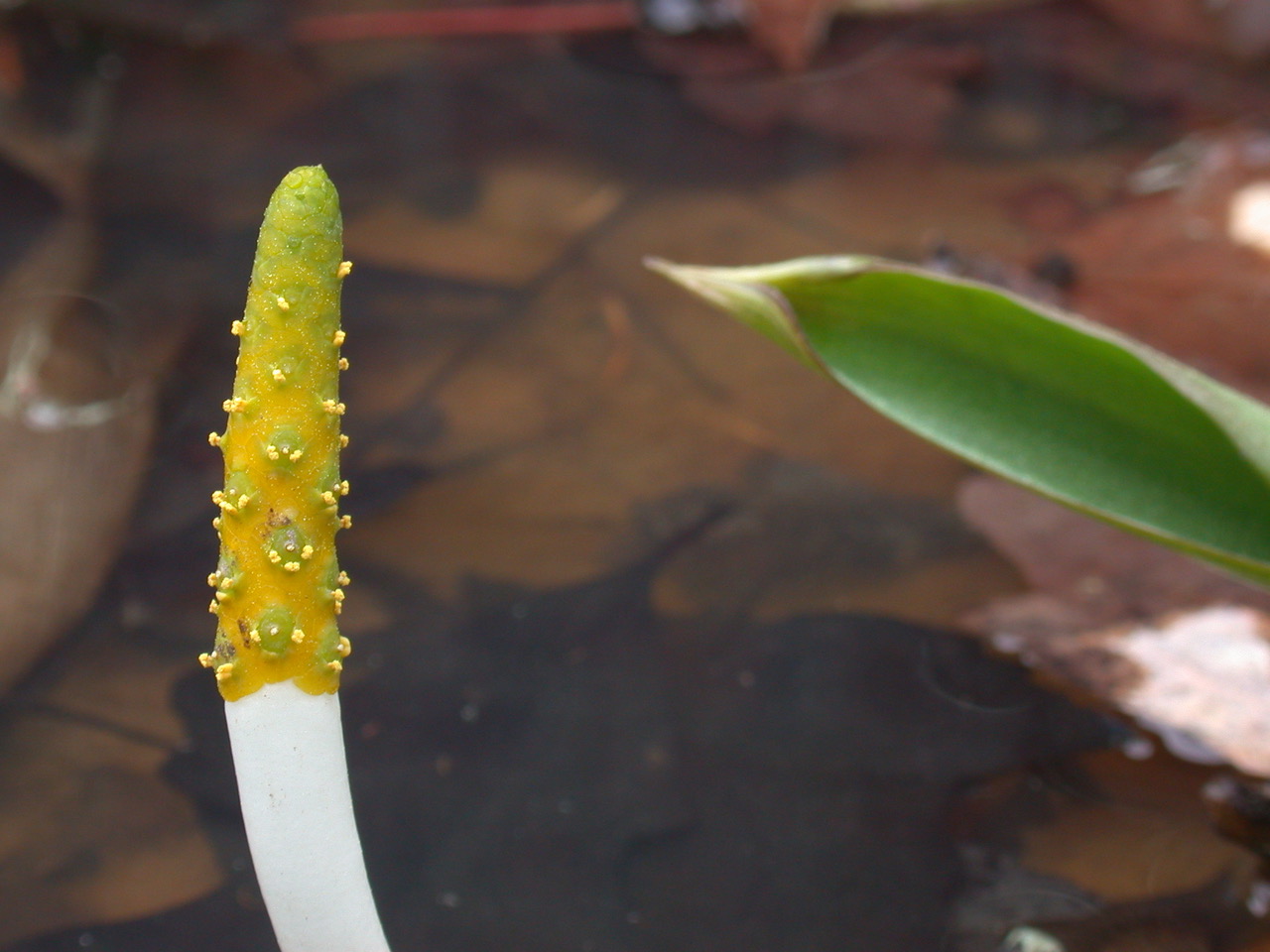NC Native Plant Society:
Plant Details
Orontium aquaticum
Golden-club, Bog Torch, Bog Torches, Never-wet
Scientific Name: |
Orontium aquaticum |
|---|---|
Genus: |
Orontium |
Species Epithet: |
aquaticum |
Common Name: |
Golden-club, Bog Torch, Bog Torches, Never-wet |
Plant Type |
Herb/Wildflower |
Life Cycle |
Perennial |
Plant Family |
Araceae (Arum Family) |
Native/Alien: |
NC Native |
Invasive Status: |
(*Key) |
Size: |
0-1 ft., 1-3 ft. |
Bloom Color(s): |
White, Yellow |
Light: |
Sun - 6 or more hours of sun per day, Part Shade - 2 to 6 hours of sun per day |
Soil Moisture: |
Wet, Aquatic |
Bloom Time: |
March, April |
Growing Area: |
Mountains, Piedmont, Sandhills, Coastal Plain |
Habitat Description: |
Generally in peaty and stagnant water (acidic to calcareous), such as beaver ponds, blackwater streams, swamps, pools in low pocosins, streambeds in the Piedmont, bogs and swamps in the mountains, tidal freshwater marshes. In NC, common in the Sandhills and much of the remainder of the southern and southwestern Coastal Plain. Fairly common, at least locally, in the southeastern Piedmont. It is uncommon and local over the remainder of the Coastal Plain, Piedmont, and mountains. |
Leaf Arrangement: |
Basal |
Leaf Retention: |
Deciduous |
Leaf Type: |
Leaves veined, not needle-like or scale-like |
Leaf Form: |
Simple |
Life Cycle: |
Perennial |
Wildlife Value: |
Not Assigned |
Landscape Value: |
Recommended and Available |
State Rank: |
S4: Apparently secure, S5: Secure (*Key) |
Global Rank: |
G5 - Secure (*Key) |
State Status: |
W6: Watch List: Regionally Rare (*Key) |
|
Flowering spadix
Wake County, NC, March 2002 by Hugh Partridge |
|
Links: |
|
back to top
go to plant details search
go to plant images search
go to gallery home
back to Initial o Gallery
back to orchids
back to Carnivorous Plants
back to Trilliums




